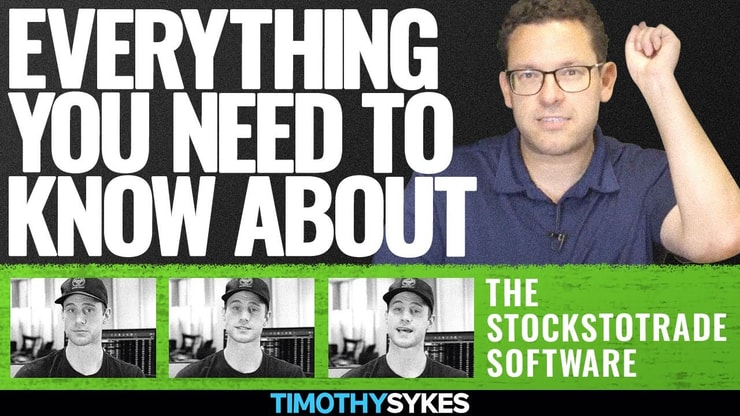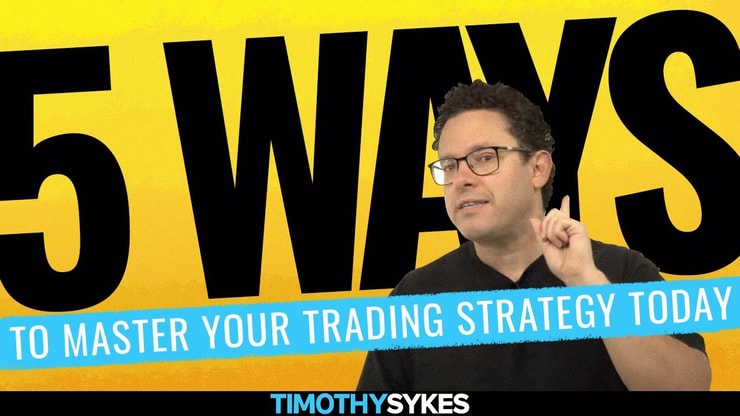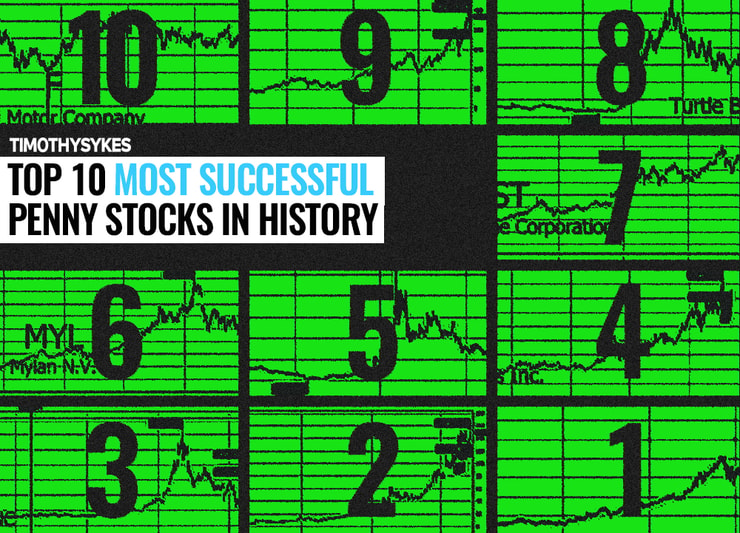You can’t trade Sora AI stock right now—and that matters. In a market built on hype and momentum, knowing what you can’t trade is just as important as spotting what you can. If you’re serious about growing as a trader, you need to understand where opportunity starts and where it stops, especially with emerging tech like artificial intelligence.
For AI stocks you can trade — check out my AI penny stock watchlist here!
Read this article because it explains what Sora AI really is, why you can’t buy its stock yet, and how to position your trades around the companies shaping its future.
I’ll answer the following questions:
- What is Sora AI and how does it work?
- Is Sora AI publicly traded?
- What is the Sora AI stock symbol?
- Does Sora AI have a stock price or valuation?
- How does Sora contribute to OpenAI’s valuation?
- What are the best alternatives to Sora AI stock for traders?
- How might Sora AI impact Microsoft and other AI-related stocks?
- Can I gain exposure to Sora AI through ETFs or other public companies?
Let’s get to the content!
Table of Contents
- 1 What is Sora AI?
- 2 Is Sora AI Stock Publicly Traded?
- 3 Sora AI Stock Price and Valuation
- 4 Best Alternatives to Sora AI for Traders
- 5 Sora and OpenAI Stock: Predictions, Market Impact & Future Outlook for Traders
- 6 Key Takeaways
- 7 Frequently Asked Questions
- 7.1 How does Sora AI relate to broader investment and portfolio strategies?
- 7.2 Why doesn’t Sora AI have a market cap or trading volume?
- 7.3 Can Sora AI influence technical analysis in related stocks?
- 7.4 What is the risk and potential return of trading stocks connected to Sora AI?
- 7.5 How is Sora AI shaping trends in the markets and tech industry?
- 7.6 Is there any information or research about Sora AI on platforms like Ondo or Reddit?
- 7.7 Is Sora AI available in multiple languages like English, and how does it serve global generations of users?
- 7.8 What kind of assets does Sora AI create, and how are they showcased to the world?
What is Sora AI?
Sora AI is a text-to-video generation model developed by OpenAI, built to create realistic video clips from written prompts. It can generate up to one-minute-long videos that mimic cinematic quality, tapping into datasets of licensed and public video to simulate environments, objects, and actions. Like ChatGPT for text or DALL·E for images, Sora turns typed descriptions into synthetic media in seconds.
Sora isn’t just another AI tool—it’s a sign of where video content is going. From a trading perspective, that’s a major signal. My teaching experience with thousands of traders shows how technology shifts like this often lead to unexpected stock spikes in related sectors. Understanding what tools like Sora can do isn’t just cool tech knowledge—it’s a way to stay one step ahead of moves in media, cloud, and AI-driven companies.
To stay a step ahead it’s important to use a trading platform that offers real-time data.
When it comes to trading platforms, StocksToTrade is first on my list. It’s a powerful day and swing trading platform that integrates with most major brokers. I helped to design it, which means it has all the trading indicators, news sources, and stock screening capabilities that traders like me look for in a platform.
Grab your 14-day StocksToTrade trial today—it’s only $7!
Is Sora AI Stock Publicly Traded?
Sora AI is not a company—it’s a model created by OpenAI. That means there is no separate “Sora AI stock” available to trade, and no shares directly tied to this video generation technology. You can’t pull up a chart or ticker for it, and it’s not listed on any exchange.
This matters because many beginner traders get distracted by buzzwords and headlines. Just because something’s trending doesn’t mean it’s tradable. I’ve seen new traders waste time chasing names that don’t even have equities. Focus on companies, not concepts. The opportunity with Sora is indirect, and recognizing that distinction is part of developing trading discipline.
Some traders ask if there’s a “backdoor” to trading Sora by finding lesser-known stocks that license or support OpenAI tech. While that’s a creative idea, it’s often more risk than reward without confirmed news. I’ve seen students waste time on shell companies claiming vague AI connections. Instead of guessing, focus on actionable data—who’s actually funding, supplying, or integrating with OpenAI. That’s where volume and volatility tend to show up first.
If you’re trying to understand how AI connects to real trading setups, study the bigger picture in this article on how to use AI to trade stocks.
Most of all—USE AI TO TRADE AI!
XGPT is the AI tool my team and I have built to spot high-odds stock setups—faster, smarter, and more efficiently than any human can. You don’t have to be a math genius or some tech wizard. XGPT analyzes patterns, price action, and data the way my top students do… only it does it 1,000x faster.
Whether you like it or not, AI is part of modern trading. Other traders are already using it, shouldn’t you?
What is the Sora AI Stock Symbol?
There is currently no official stock symbol for Sora AI. Since it’s a model inside OpenAI’s platform, and OpenAI itself is not publicly traded, there’s no ticker to search for or add to a watchlist. If OpenAI were to go public, that could change, and Sora might be a key selling point behind the brand’s valuation and ticker.
I’ve seen countless traders get caught chasing phantom tickers based on online rumors. That’s not strategy, that’s speculation without a plan. When I train students, I emphasize verifying whether a ticker even exists before analyzing price action. With Sora, if you’re looking for exposure, you need to think in terms of proxy plays—companies building, supporting, or integrating this kind of AI.
Sora AI Stock Price and Valuation
There is no Sora AI stock price because there is no standalone Sora stock. It’s part of OpenAI’s technology stack. However, Sora likely adds significant value to OpenAI’s private valuation, which reached $300 billion as of early 2025. With explosive user growth and new tools like Sora driving demand, OpenAI is on track to generate over $12 billion in revenue this year.
In my experience, traders who understand how product development ties into valuation are better positioned to spot sympathy plays and volume triggers. Tools like Sora aren’t just features—they’re future catalysts. When OpenAI adds something this powerful to its ecosystem, it strengthens the case for associated stocks and sectors to run on momentum, volume, or narrative shifts.
Best Alternatives to Sora AI for Traders
If you want to trade companies impacted by Sora’s development, look at those with direct financial, technical, or strategic exposure to OpenAI and generative video. These stocks have volume, liquidity, and real tickers. And they’ve all seen moves tied to AI trends, with catalysts traders can track.
Microsoft (NASDAQ: MSFT)
Microsoft is OpenAI’s largest backer and cloud partner, holding a major profit-share agreement and providing the computing power behind ChatGPT and Sora. Azure is the engine here, and Microsoft’s integration of AI into Office and enterprise tools is already boosting its revenue run rate. For traders, MSFT offers both stability and a high-volume AI sympathy play.
I teach students to focus on what moves stocks—not just the story, but the actual numbers. Microsoft’s AI segment is now a multi-billion dollar engine with measurable performance and forecastable growth. When OpenAI tools like Sora gain adoption, Microsoft is one of the clearest beneficiaries.
More Breaking News
- GMS Inc.: Surprising Turn of Events
- Ford’s Sales Surge: What’s Next?
- VALE’s Surge: Analyzing the Unexpected Stock Performance
Alphabet (NASDAQ: GOOG, GOOGL)
Alphabet’s competing products like Lumiere and Gemini show that it’s not sitting still in the generative AI race. GOOGL is deeply embedded in video, cloud, and advertising—all of which could be disrupted or enhanced by Sora-like technologies. If you’re tracking AI innovation, you can’t ignore this ticker.
GOOGL is a prime example of a stock that moves on both AI news and earnings performance. I’ve traded it on earnings sympathy and product cycle announcements. Volume spikes when there’s news about competition or progress in AI video. That’s where opportunity comes in—if you’re watching the right data.
Adobe (NASDAQ: ADBE)
Adobe is investing heavily in generative AI tools through its Firefly suite and is positioned to serve creative professionals who could be either disrupted or empowered by tools like Sora. Adobe’s core user base overlaps with Sora’s potential market, which gives this stock exposure without direct dependence.
Traders often overlook software stocks in favor of hardware or flashy names, but Adobe has consistent liquidity and a strong reaction history to AI integration news. I’ve taught students to treat stocks like ADBE as barometers for sentiment in the creative tech space. When tools like Sora get headlines, watch for sympathy spikes here.
Another angle with Adobe is how it fits into the broader competition among creative AI tools. As the design tools like Stability AI develop, it pressures companies like Adobe to innovate faster. That race can fuel speculation—which is what us traders look for.
NVIDIA (NASDAQ: NVDA)
NVIDIA makes the chips that run nearly every major AI model, including Sora. Its GPUs are the foundation of generative AI infrastructure. With over 30,000 of its chips rumored to support ChatGPT and similar systems, NVDA is an undeniable leader in AI capital and volume.
NVDA is one of the most consistent runners during AI momentum cycles. I’ve traded it through multiple surges, and every time, it follows similar patterns: volume buildup, consolidation, breakout. Understanding the role of supply and demand in AI computing helps traders time entries and avoid chasing.
Sora and OpenAI Stock: Predictions, Market Impact & Future Outlook for Traders
The growth of Sora signals a wider adoption of generative AI in video and content creation. If OpenAI continues to integrate Sora into mainstream platforms like ChatGPT or Azure, it could reshape entire industries—from entertainment to education to ecommerce. But traders need to focus on how that potential filters into capital flows, chart patterns, and volume spikes.
Based on my two decades of trading experience, I look for market inefficiencies tied to hype cycles. When tech like Sora makes headlines, it’s not about the tool—it’s about the reaction. Track sentiment, monitor volume, and watch the proxy tickers. Sora’s future might include IPO talk or expanded partnerships, but the real edge comes from being early to the names that actually trade.
Key Takeaways
- Sora AI is a video generation model built by OpenAI, not a stock.
- There is no Sora ticker symbol or stock price. OpenAI remains private.
- Traders can look for exposure through Microsoft, NVIDIA, Adobe, and Alphabet.
- Sora adds value to OpenAI’s $300B valuation and may impact related tickers.
- Trading success comes from understanding what moves the market—not just chasing the latest tech.
Trading isn’t rocket science. It’s a skill you build and work on like any other. Trading has changed my life, and I think this way of life should be open to more people…
I’ve built my Trading Challenge to pass on the things I had to learn for myself. It’s the kind of community that I wish I had when I was starting out.
We don’t accept everyone. If you’re up for the challenge—I want to hear from you.
Apply to the Trading Challenge here.
Trading is a battlefield. The more knowledge you have, the better prepared you’ll be.
What AI stocks are on your watchlist right now? Write “I’ll keep it simple Tim!” in the comments if you picked up on my trading philosophy!
Frequently Asked Questions
How does Sora AI relate to broader investment and portfolio strategies?
Sora AI isn’t directly available for investment, but traders can seek exposure through equity stakes in OpenAI’s partners or AI-focused companies. Portfolio strategies involving AI often include tech leaders with strong financials and innovative products, such as Microsoft or NVIDIA. These companies help bridge the gap between cutting-edge AI tools and actual trading opportunities in the finance sector.
Why doesn’t Sora AI have a market cap or trading volume?
Sora AI is not a company and doesn’t issue stock, so it has no market cap or trading volume to analyze or trade. Metrics like those only apply to public companies where shares can be bought and sold. Traders should focus on the companies behind Sora and track their volume patterns for actionable setups.
Yes, developments in tools like Sora can trigger reactions in stocks tied to generative AI, leading to chart patterns and price action worth analyzing. For traders, technical analysis becomes more powerful when paired with real-time news that creates volatility. Identifying these connections gives traders an edge in planning entries and exits around AI-driven catalysts.
What is the risk and potential return of trading stocks connected to Sora AI?
The risk is that AI hype fades or fails to convert into commercial success, causing pullbacks in related stocks. But the potential returns can be strong if trading is timed with volume surges and news catalysts from credible AI projects. As with any trade, proper risk management is key—never rely solely on speculation.
How is Sora AI shaping trends in the markets and tech industry?
Sora AI is helping reshape expectations for generative media, adding pressure and opportunity within both the AI sector and broader technology markets. This shift affects how traders and institutions evaluate industry momentum, especially as video generation tools become more mainstream. These events often drive rotation into stocks with exposure to content creation and machine learning.
Is there any information or research about Sora AI on platforms like Ondo or Reddit?
Platforms like Ondo and Reddit Home often feature discussions, research, and user-generated posts about Sora AI, with opinions ranging from technical analysis to speculation. These sources can surface early news or trader sentiment before it reaches mainstream articles. Just be sure to log in to your account to access full navigation features and verify information with official updates.
Is Sora AI available in multiple languages like English, and how does it serve global generations of users?
Yes, Sora AI currently functions in English, but future updates may expand its accessibility to a wider global audience across different languages. Its appeal spans generations, from younger creators exploring AI tools to older professionals adapting to a changing digital world. As a tool that generates video assets, it holds value for a broad user base across industries and cultures.
What kind of assets does Sora AI create, and how are they showcased to the world?
Sora AI generates video assets based on text prompts, simulating real-world visuals that can be used in creative or commercial projects. These outputs are sometimes featured in banner-style previews across news sites and demo pages to highlight the model’s capabilities. By providing shareable, high-quality content, Sora helps spread generative AI awareness worldwide.












Leave a reply